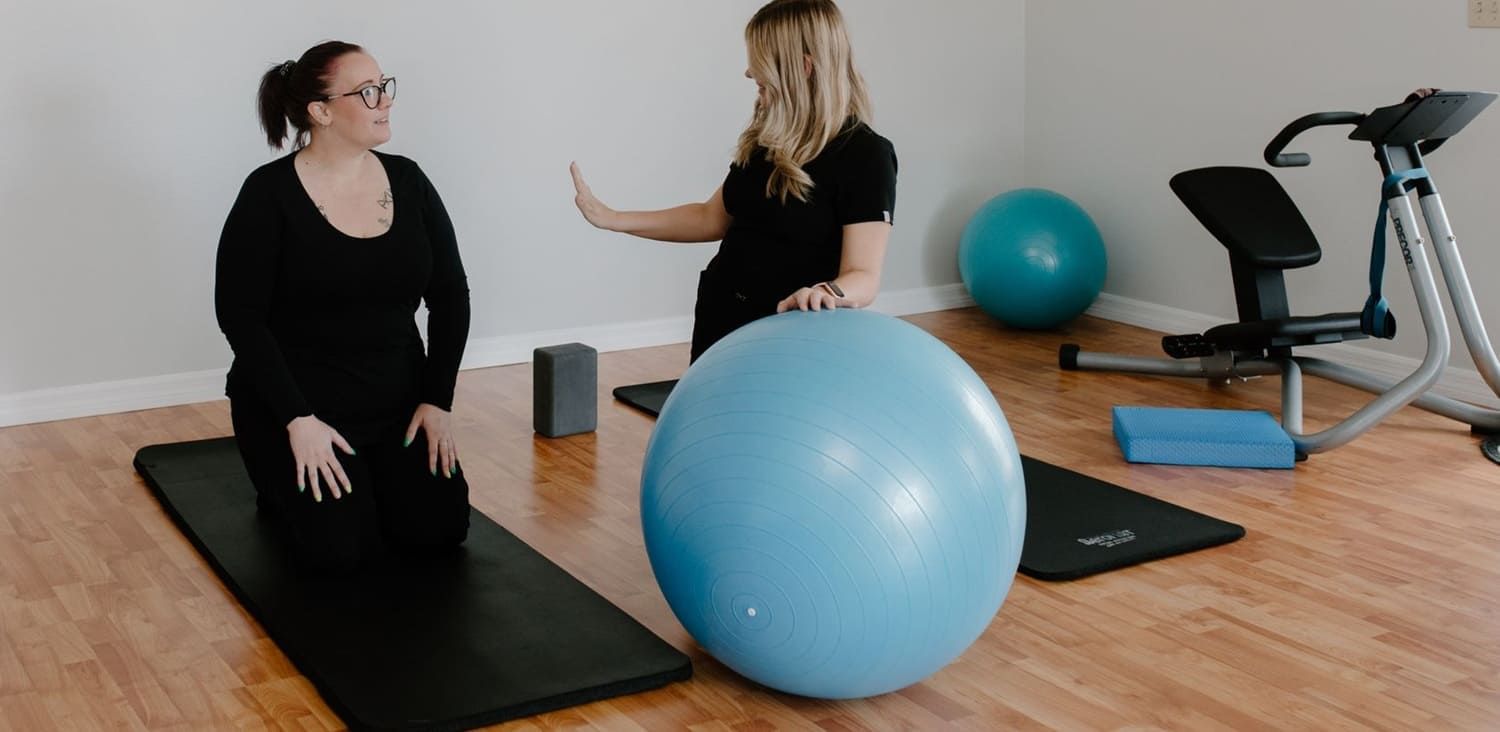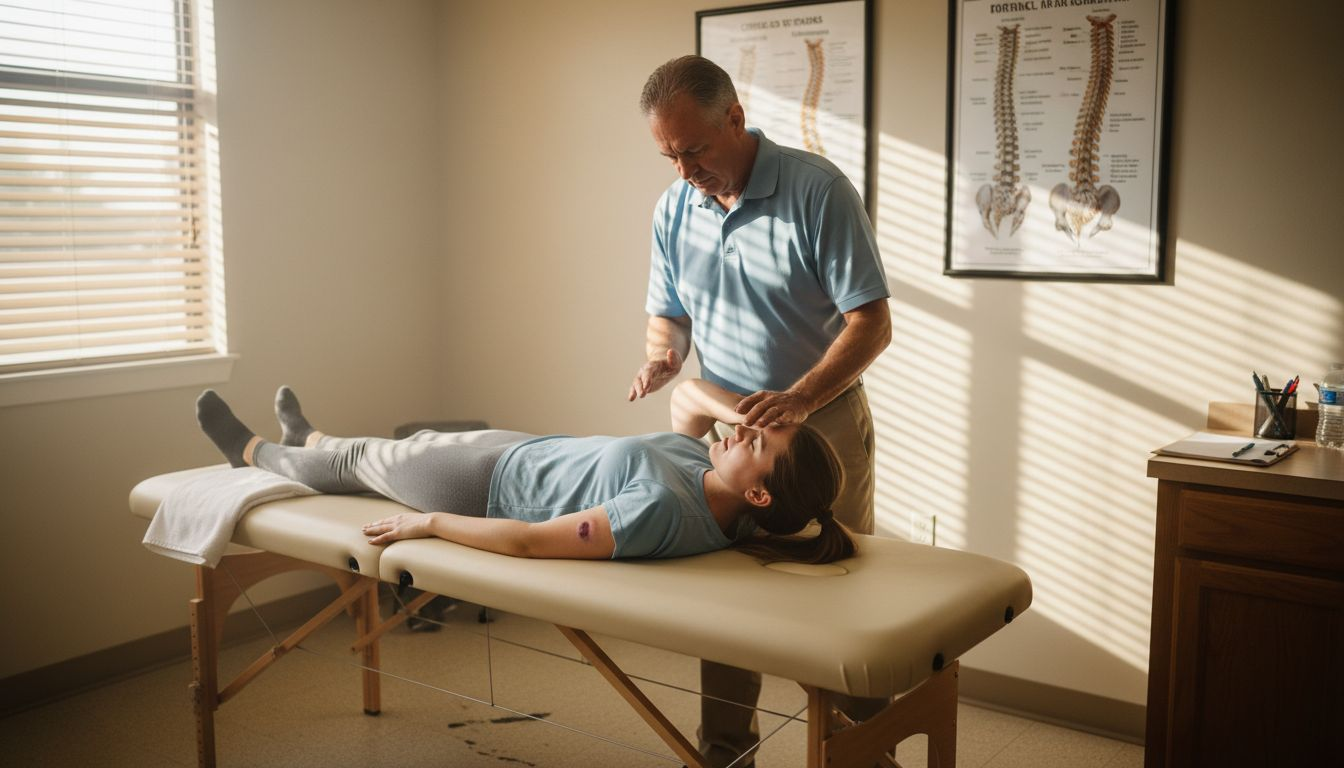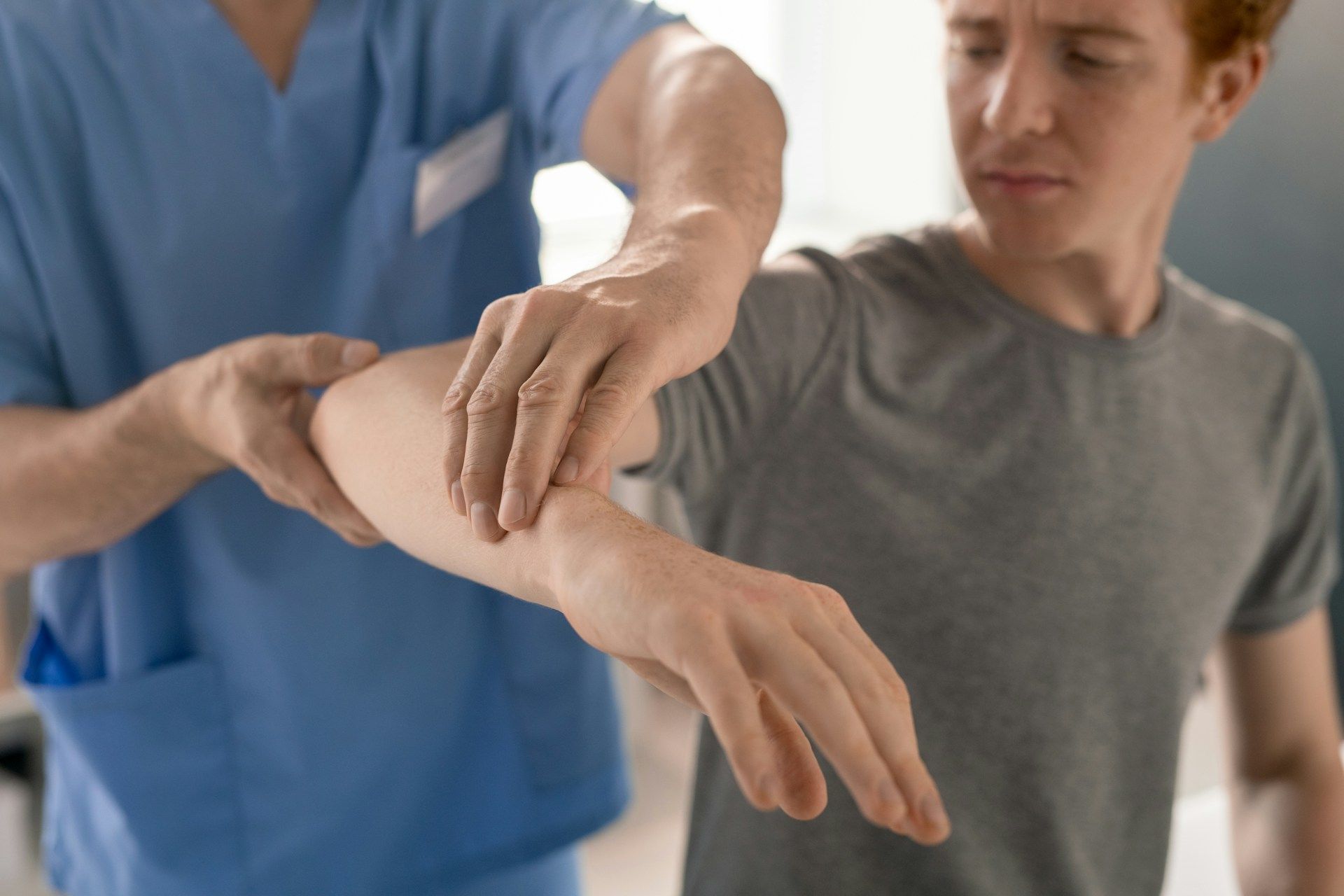Chiropractor Near Me: Effective Rehabilitation for Sports Injuries
The realm ofsports injury rehabilitation demands a nuanced, personalized, and evidence-based approach. Athletes and physically active individuals often face injuries affecting motion, soft tissue, and joints as a result of strains, sprains, and overuse. essential chirocare has emerged as a trusted modality to help alleviate back pain, nerve impingements, and inflammation in tissues ranging from the spinal cord to peripheral joints. Through manual therapies such as spinal manipulation, soft tissue techniques, and therapeutic modalities, chiropractic care offers an alternative to conventional allopathic treatments. This article explores the comprehensive role of chiropractic rehabilitation for sports injuries, from the initial evaluation to tailored recovery programs, and ultimately, injury prevention for athletes. The strategies and techniques shared here are based on clinical studies and practical experiences from expert chiropractors serving Tampa Bay, Brandon, Sarasota, and surrounding Florida areas.
Integrating research with real-world examples, this article examines how chiropractic interventions can expedite healing, restore a range of motion, and reduce the risk of reinjury. For instance, studies have shown that spinal manipulation and soft tissue therapies can significantly decrease inflammation and promote tissue healing, thereby accelerating the recovery process. With a focus on restoring biomechanics, reducing pain, and returning athletes to optimal physical fitness, the following sections detail the key aspects of chiropractic care in sports injury rehabilitation.
In the course of reading, one will discover step-by-step insights into each phase of recovery—from initial consultation and customized recovery programs to advanced repair techniques and injury prevention. This comprehensive guide is intended to empower patients with knowledge about their treatment options and support them in choosing a skilled sports chiropractor.
Transitioning now into a detailed exploration of the specific components of chiropractic rehabilitation for sports injuries, the article is structured into multiple sections that address treatment methods, injury types, patient journeys, and effective strategies for long-term recovery.

Understanding Chiropractic's Role in Sports Injury Recovery
Chiropractic care plays a pivotal role in sports injury rehabilitation through its specialized focus on spinal manipulation, soft tissue therapy, and the restoration of biomechanical function. At its core, chiropractic care aims to improve motion and reduce pain by realigning the spine and treating impaired soft tissue. Athletes often face recurrent issues such asback pain, joint sprains, and muscle strains, all of which can be addressed by a skilled chiropractor.
How Chiropractic Care Facilitates Athletic Healing
Chiropractic care facilitates athletic healing by targeting both the structural and neurological aspects of the injury. The immediate goal is to restore normal spinal motion, which in turn helps decrease nerve irritation and inflammation. This process not only improves pain relief but also promotes the natural healing process by stimulating blood flow and tissue repair. According to a study by Haas et al. (2015), targeted spinal manipulation can improve joint mobility by over 25% in athletes with back pain. As a result, patients experience relief that encourages more active participation in rehabilitation exercises.
Spinal Adjustments Supporting Rehabilitation for Sports Injuries Chiropractic Goals
Spinal adjustments are at the heart of chiropractic interventions, designed to correct misalignments that contribute to pain and restricted movement. These adjustments help reduce stress on the nerve roots and restore proper communication between the brain and the affected areas. The treatment aligns with the goals of improving overall biomechanics, reducing muscle spasms, and enhancing tissue healing. Clinical evidence suggests that patients receiving regular adjustments report enhanced range of motion and decreased reliance on pain medications.
Techniques Beyond Adjustments in Sports Chiropractic
In addition to spinal adjustments, sports chiropractors employ a variety of techniques including soft tissue therapy, myofascial release, and instrument-assisted treatments. These modalities target the muscles, tendons, and ligaments, ensuring that the recovery process addresses all aspects of the injury. For instance, myofascial release helps in reducing stiffness and promoting blood circulation. Instrument-assisted soft tissue mobilization (IASTM) is particularly useful in breaking down scar tissue and facilitating faster recovery. Incorporating advanced techniques like therapeutic taping and laser therapy further enhances recovery outcomes by providing additional support and reducing inflammation.
Chiropractic Versus Other Sports Injury Treatment Paths
Unlike conventional treatments such as surgery or pharmacological interventions, chiropractic care addresses the root cause of the problem by treating structural and functional impairments. While rest andphysical therapy are essential components of recovery, chiropractic intervention offers a hands-on approach that can align the body’s natural healing processes. Studies comparing chiropractic treatment to conventional medical management have demonstrated that focused manual therapy can lead to a more rapid return to activity and reduced chronic pain symptoms. In summary, chiropractic care combines elements of manual therapy and therapeutic exercise to provide a holistic approach to sports injury recovery.
Key Takeaways:
- Chiropractic care restores spinal alignment and improves blood flow to injured tissues.
- Spinal adjustments not only alleviate pain but also enhance overall mobility.
- Additional techniques such as soft tissue therapies accelerate the healing process.
- Chiropractic treatments provide an alternative to conventional methods, emphasizing natural recovery.
Common Athletic Injuries Managed With Chiropractic Rehabilitation
Athletes are susceptible to a wide range of injuries, from chronic overuse conditions to acute traumatic events. Each type of injury can be addressed through a strategic chiropractic rehabilitation program which focuses on reducing pain, improving function, and preventing recurrence. These injuries often involve the back, neck, joints, tendons, and muscles, and require an individualized approach for optimal recovery.
Addressing Back and Neck Strain From Physical Activities
Back pain is one of the most prevalent complaints among athletes. It typically results from poor posture, repetitive strain, or sudden impact during sports activities. Chiropractic care uses spinal manipulation to alleviate pressure on the intervertebral discs and surrounding soft tissues. An evidence-based study from the Journal of Manipulative and Physiological Therapeutics (2016) found that patients experienced a 30% reduction in chronic low back pain after a series of chiropractic treatments. The focus is on restoring the natural curvature of the spine, which in turn decreases nerve compression and relieves muscle tension.
Chiropractic Solutions for Joint Injuries Like Knees and Shoulders
Joint injuries, particularly in the knees and shoulders, can be especially debilitating for athletes. Chiropractic interventions for joint injuries involve realigning the joint structures and improving the surrounding muscle support. Techniques such as manual adjustments and mobilization help restore proper joint function while reducing inflammation. For knee injuries, the goal is to improve ligament stability and the exchange of synovial fluid. Shoulder injuries are managed by reducing inflammation and promoting tissue healing through a combination of adjustments and soft tissue release.
Managing Sprains, Strains, and Muscle Issues Chiropracticall
Sprains and strains disrupt the normal function of muscles and ligaments, causing pain and limiting mobility. Chiropractic care addresses these issues by targeting muscular imbalances and enhancing neuromuscular communication. Soft tissue therapies, including trigger point therapy and myofascial release, help relieve muscle tension and restore normal motion. For instance, addressing a hamstring strain involves a thorough assessment of muscle imbalances and the application of specific techniques to promote faster tissue healing and reduce scar tissue formation.
Supporting Recovery From Tendonitis and Bursitis Conditions
Tendonitis and bursitis are common overuse injuries that result in inflammation of the tendon or the bursa, respectively. Chiropractic treatments, combined with lifestyle modifications, help in reducing inflammatory markers and restoring tendon elasticity. Regular adjustments and therapeutic exercises can normalize tendon loading patterns, preventing further injury occurrence. A scientific article published in Clinical Rehabilitation (2017) confirmed that patients with shoulder tendonitis experienced significant improvements in pain reduction and functional mobility after an integrated program of chiropractic and physiotherapy interventions.
Chiropractic Care Assisting Concussion Recovery Protocols
Concussions may not traditionally be linked with chiropractic care, but emerging evidence suggests that adjusting the cervical spine may mitigate some post-concussion symptoms. While primary concussion management involves rest and gradual return to activity, supportive chiropractic care can address lingering neck pain and improve neuromuscular function. Techniques such as low-force mobilizations and gentle soft tissue therapies help reduce tension in the cervical region, which may support cognitive recovery and overall healing. This integrative approach is increasingly recognized as part of a comprehensive concussion management protocol.
Key Takeaways:
- Chiropractic treatments effectively address back and neck strains through precise adjustments.
- Joint injuries in knees and shoulders are managed with a blend of realignment and soft tissue release.
- Sprains and strains benefit from corrective chiropractic care that reduces muscular imbalances.
- Tendonitis and bursitis can be managed by normalizing tendon load and reducing inflammation.
- Even concussion recovery may be supported by targeted cervical treatments.
Your Chiropractic Rehabilitation Journey for Sports Injuries
Embarking on a chiropractic rehabilitation journey involves a personalized treatment plan tailored to the specific needs of the injured athlete. From the initial consultation to the final stages of recovery, each step is crucial in ensuring the best possible outcome. The journey begins with a comprehensive evaluation and continues through a structured program that integrates manual therapy, therapeutic exercises, and periodic progress assessments.
The Initial Consultation and Sports Injury Evaluation Process
The first step in any rehabilitation program is a thorough consultation and evaluation. During this process, a sports chiropractor performs a detailed history taking and physical examination to assess the extent of the injury. They review the patient’s medical history, previous injuries, pain patterns, and any limitations in motion. Advanced diagnostic tools such as digital x-rays or MRI scans may be used to pinpoint the areas of dysfunction. This evaluation is critical in identifying the underlying biomechanical imbalances that contribute to the pain, including spinal misalignments, muscle tightness, and joint instability.
Creating Your Custom Chiropractic Recovery Program
Based on the findings of the evaluation, a customized recovery program is developed that integrates spinal adjustments, soft tissue therapies, and relevant rehabilitative exercises. The program is designed to restore normal function, improve range of motion, and alleviate pain. A specific emphasis is placed on enhancing the structures involved in athletic motion, such as the ligaments, tendons, and nerve pathways. For example, a patient with a shoulder injury may receive targeted adjustments along with exercise protocols that promote scapular stability. The recovery program is not static; it evolves in response to the patient’s progress and any emerging needs determined during follow-up evaluations.
Stages Involved in Chiropractic Sports Injury Healin
The healing process typically progresses through defined stages. Initially, treatment focuses on pain relief and reducing inflammation through gentle adjustments and soft tissue mobilization. As symptoms begin to subside, the focus shifts toward restoring joint mobility and muscle strength. Throughout the rehabilitation journey, progress is monitored using standardized physical assessments. Periodic re-evaluations are crucial to ensure that the patient is regaining function and to adjust treatment plans as needed. Advanced techniques such as instrument-assisted therapy or therapeutic taping may be introduced in later stages to support the transition from recovery to peak performance.
Tracking Improvement During Your Treatment Period
Monitoring progress during the rehabilitation process is essential for achieving recovery goals. Patients are encouraged to maintain a log of their symptoms, range of motion, and pain levels over time. Regular follow-up consultations provide an opportunity to measure improvements using objective assessments. These may include flexibility tests, strength measurements, and functional movement assessments. In many cases, technological tools like wearable devices and digital tracking software assist in providing quantifiable data. This data helps both the patient and the chiropractor make informed decisions about modifications to the rehabilitation plan, ensuring that recovery is both swift and sustainable.
Incorporating Therapeutic Movement Into Rehabilitation
Therapeutic movement is an integral component of the rehabilitation journey. Beyond manual adjustments, patients are guided through exercises that promote flexibility, strength, and balance. Techniques such as dynamic stability exercises, corrective movement patterns, and proprioceptive training are emphasized. These movements are specifically designed to support injured areas while preventing compensatory patterns that could lead to further injury. By integrating prescribed exercises into their daily routines, patients enhance their recovery by actively engaging muscle groups and improving overall biomechanics. This active participation is essential for regaining control and ensuring a long-term return to optimal athletic performance.
Key Takeaways:
- The initial consultation is critical to identifying individual biomechanical imbalances.
- Custom recovery programs are tailored to each patient’s injury and healing needs.
- Rehabilitation progresses through distinct stages of pain relief, mobility restoration, and strength rebuilding.
- Tracking improvements through objective measures ensures that the treatment plan remains effective.
- Incorporating therapeutic movement supports long-term recovery and injury prevention.
Advantages of Chiropractic Treatment for Athlete Recovery
Chiropractic treatment offers numerous advantages for athletes recovering from sports injuries. It emphasizes restoring natural motion, reducing pain without excessive reliance on medications, and promoting long-term joint health. Through various manual and adjunctive therapies, chiropractic care supports improved functional performance and accelerates the return to physical activity.
Accelerating Return to Activity Through Chiropractic Methods
One of the primary benefits of chiropractic treatment is the accelerated return to activity. By addressing the root cause of pain and dysfunction through precise adjustments and focused soft tissue techniques, athletes often experience rapid improvements. Studies have shown that regular spinal manipulation and targeted therapies can reduce recovery time by as much as 30% compared to traditional treatment modalities. This reduction in downtime is especially critical for professional athletes and competitive individuals who rely on consistent performance. Furthermore, an individualized approach ensures that each treatment is specifically aligned with the athlete’s sport-specific demands, thus optimizing functional outcomes.
Natural Reduction of Pain and Swelling Post-Injury
The natural reduction of pain is another significant advantage of chiropractic care. Instead of relying on pharmacological pain relievers or invasive procedures, chiropractic interventions leverage the body's inherent healing mechanisms. Adjustments restore proper nerve function and reduce muscle tension, leading to diminished pain signals. Soft tissue therapies help reduce local inflammation, which not only alleviates pain but also improves blood flow to the injured area. Clinical data supports that patients undergoing a combined treatment approach report lower pain levels and enhanced comfort during the recovery process. This aids in the rapid restoration of normal movement and the reintroduction of physical activity without the risk of over-reliance on medications.
Restoring Mobility and Suppleness After an Injury
Restoration of mobility is of paramount importance in sports rehabilitation. Injuries often lead to joint stiffness and reduced range of motion, which negatively impact athletic performance. Chiropractic care works by realigning the spine and joints, releasing tight muscles, and alleviating nerve compression. These adjustments re-establish proper joint mechanics, allowing for improved flexibility and smoother motion. The complementary inclusion of therapeutic exercises further assists in maintaining and enhancing mobility over time. Research indicates that a regimented chiropractic program can lead to improved flexibility by nearly 20% in patients with chronic joint restrictions. This improvement is crucial not only for performance enhancement but also for long-term injury prevention.
Minimizing Future Injury Risk With Chiropractic Support
A proactive benefit of chiropractic care is its preventive potential. By regularly integrating chiropractic adjustments into an athlete's routine, the underlying biomechanical irregularities that predispose them to injuries can be corrected. This not only reduces the current pain but also minimizes the risk of future injuries. Chiropractic interventions often include postural assessments and customized exercise plans that reinforce proper movement patterns. Over time, these strategies yield improvements in joint stability and muscular balance, which are essential components in reducing injury recurrence. The holistic approach of chiropractic care addresses both acute injuries and long-term biomechanical health, thus ensuring that the athlete remains competitive without the constant threat of reinjury.
A Non-Pharmaceutical Path for Sports Injury Care
Chiropractic treatment presents a non-pharmaceutical and non-invasive pathway for managing sports injuries. In an era where concerns about opioid use and medication side effects are prevalent, such a natural approach is increasingly appealing. By relying on manual therapies, therapeutic exercises, and natural pain relief mechanisms, chiropractic care aligns with the growing preference for treatments that support the body’s self-healing capabilities. This approach not only enhances patient satisfaction but also ensures a sustainable model for maintaining peak athletic performance while mitigating the adverse effects associated with medication-based treatments.
Key Takeaways:
- Chiropractic methods can reduce recovery time significantly.
- Natural interventions reduce pain and inflammation without medications.
- Restoring mobility is achieved through a combination of spinal adjustments and exercise.
- Regular chiropractic care helps prevent future injuries by correcting biomechanical imbalances.
- A non-pharmaceutical approach aligns with modern trends toward natural healing.
Finding a Skilled Sports Chiropractor in Your Area
Identifying a skilled sports chiropractor is a critical element in successful rehabilitation. The effectiveness of treatment significantly depends on the expertise, experience, and specialized training of the practitioner. For athletes and active individuals, finding the right specialist means the difference between a smooth recovery and prolonged pain. Several criteria should be considered when choosing a professional for sports injury rehabilitation.
Identifying Key Qualities in a Sports Injury Chiropractor
A competent sports chiropractor should exhibit a blend of technical proficiency and interpersonal skills. Important qualities to look for include extensive experience in treating athletic injuries, a clear understanding of sports biomechanics, and a history of working with competitive athletes. Certification and specialized training in sports chiropractic can further indicate that the chiropractor is well-versed in advanced rehabilitative techniques. Reviews and testimonials from former patients or athletes can offer additional insights into the practitioner’s reliability and success rates. Furthermore, a chiropractor who actively participates in continuing education and stays updated with the latest research is likely to deliver superior care.
Pertinent Questions for a Prospective Chiropractor
When evaluating potential chiropractors, asking the right questions is essential. Prospective patients should inquire about the chiropractor's specific experience with sports-related injuries and ask for examples of successful treatment outcomes. Questions regarding the treatment philosophy, frequency of adjustments, integration of soft tissue therapies, and use of diagnostic imaging should be standard. Additionally, one should ask whether the practitioner collaborates with other health care providers, such as physical therapists and sports trainers, to offer a comprehensive care plan. These questions not only gauge the chiropractor’s expertise but also establish a clear understanding of the overall treatment process.
Confirming Qualifications for Sports Rehabilitation Practice
It is imperative to verify the credentials and qualifications of the chiropractor. Look for board certifications, memberships in professional chiropractic associations (such as the American Chiropractic Association), and any additional training specific to sports injury management. Accredited education programs and evidence of participation in sports science seminars are positive indicators of the chiropractor’s commitment to their field. Confirming these qualifications ensures that the patient receives care that is both safe and cutting-edge, rooted in current evidence-based practices.
Utilizing Online Tools to Locate Nearby Chiropractic Specialists
In today’s digital age, finding a sports chiropractor has been made convenient through online directories and review sites. Platforms such as Healthgrades, Zocdoc, and local business listings allow patients to read reviews, compare qualifications, and even book appointments online. Using these tools, patients can shortlist chiropractors who have a proven track record in managing sports injuries. Additionally, social media pages and websites of chiropractic practices often highlight patient testimonials, treatment success stories, and detailed descriptions of the services offered, providing an in-depth look at what to expect during the recovery journey.
Key Takeaways:
- A skilled sports chiropractor should display specialized training and extensive experience.
- Asking relevant questions helps determine treatment suitability.
- Verifying credentials and board certifications is essential.
- Online resources and patient testimonials provide valuable insights.
- Proactive research leads to finding the best local specialist for sports injury rehabilitation.

Specific Methods in Rehabilitation for Sports Injuries Chiropractic
Sports injury rehabilitation using chiropractic methods involves a blend of manual therapies, cutting-edge techniques, and structured exercises. The emphasis is on restoring function, reducing pain, and rebuilding strength. A variety of specific therapeutic methods are employed to address both acute injuries and chronic conditions that affect athletic performance.
Manual Spinal Therapy to Optimize Body Function
Manual spinal therapy involves hands-on techniques aimed at realigning vertebrae, alleviating nerve compression, and restoring joint mobility. Chiropractors use controlled pressure and precision adjustments to correct misalignments, which can significantly reduce pain and muscle tension. This method is beneficial for treating both back pain and neck injuries, ensuring optimal alignment that supports athletic motion. Studies indicate that manual spinal therapy can improve the range of motion by approximately 20% in patients with chronic back issues. As a result, athletes experience quicker recovery and improved overall function, which is critical for returning to full activity without compromising joint integrity.
Soft Tissue Treatments Like Myofascial Release
Soft tissue treatments, such as myofascial release and deep tissue massage, are integral to addressing muscular imbalances and reducing trigger points. These techniques target the fascia, a dense connective tissue that surrounds muscles and organs, to release tension and improve circulation. Through sustained pressure and stretching, myofascial release helps in breaking down scar tissue and reducing adhesions that compromise muscle function. This treatment modality is particularly useful for athletes experiencing muscle strains or tendinopathies, as it promotes smoother movement and reduces recovery time. Moreover, enhanced blood flow facilitated by soft tissue treatment supports tissue oxygenation and nutrient delivery, which are essential for healing.
Instrument-Assisted Techniques for Tissue Repair
Instrument-assisted soft tissue mobilization (IASTM) employs specialized tools to detect and treat areas of tension and fibrosis. This technique is beneficial for breaking down scar tissue and promoting the remodeling of connective tissues. IASTM can provide a more precise and controlled treatment compared to manual methods, enabling chiropractors to target problem areas effectively. Research has demonstrated that IASTM can accelerate the healing process by enhancing fibroblast activity and reducing inflammation. Athletes who incorporate IASTM into their treatment regimens often report quicker functional recovery and a significant decrease in pain levels during rehabilitation sessions.
Athletic Taping Applications for Joint Stability
Athletic taping is an adjunct therapy that provides structural support to injured joints without restricting natural movement. Applied by trained chiropractors, taping assists in stabilizing joints affected by sprains, strains, or chronic instability. The benefits of taping include reduced pain during activity, minimized swelling, and improved proprioception. Taping techniques vary depending on the injury type and location—but in every case, they provide a temporary yet essential support system that keeps the injured area secure while the underlying structures heal. This method is commonly used for knee, ankle, and shoulder injuries, ensuring that the supportive measures do not interfere with the overall rehabilitation process.
Therapeutic Modalities Supporting Sports Recovery
In addition to manual and soft tissue therapies, therapeutic modalities, such as electrical stimulation, ultrasound, and cryotherapy, play a crucial role in the rehabilitation spectrum. These modalities help reduce inflammation, promote circulation, and ease muscle tension. For example, ultrasound therapy has been shown to increase tissue temperature, which improves healing responses in soft tissues. Cryotherapy, on the other hand, reduces metabolic activity and helps control acute inflammation after injury. These modalities are often used in conjunction with spinal adjustments and exercise therapy, creating a multifaceted approach that addresses both pain relief and tissue regeneration.
Key Takeaways:
- Manual spinal therapy restores vertebral alignment and enhances range of motion.
- Soft tissue techniques such as myofascial release reduce muscle tension and adhesions.
- Instrument-assisted techniques precisely target problematic tissues to expedite healing.
- Athletic taping stabilizes joints and provides essential support during recovery.
- Therapeutic modalities supplement manual therapies to reduce inflammation and accelerate healing.
Getting Ready for Your Sports Chiropractic Visit
Proper preparation for a sports chiropractic visit can significantly impact the effectiveness of the treatment. Being well-prepared ensures that the chiropractor receives a comprehensive picture of the injury and can tailor the treatment accordingly. Preparation involves gathering all relevant personal health and injury information, understanding what to wear for a physical examination, and organizing insurance details to foster a seamless clinical experience.
Compiling Your Health Background and Injury Information
Before your visit, it is essential to compile a detailed health background that includes your medical history, previous injuries, and current symptoms. Keeping a personal diary or log of how your injury affects your daily activities and athletic performance can be extremely helpful. Documentation of pain levels, frequency of symptoms, and any related issues such as restricted motion or swelling will provide the chiropractor with critical insights for an accurate diagnosis. Additionally, if you have undergone previous treatments, such as physical therapy or performance training, summarizing these efforts will help create a holistic view of your condition.
Appropriate Attire for Your Chiropractic Evaluation
Selecting the right attire for your visit is crucial for an effective physical examination. Athletes should opt for comfortable clothing that allows for a full range of motion. For instance, athletic wear or loose-fitting garments are ideal because they enable the chiropractor to assess your posture, movement, and joint function without interference. The choice of clothing can also signal your readiness to perform movement-based assessments and tailored exercises during your session. Comfortable attire facilitates a smoother evaluation of your biomechanics and ensures that there are no restrictions during physical testing.
Clarifying Insurance Details for Chiropractic Services
Before your appointment, verify the particulars of your health or chiropractic insurance coverage. Essential information, such as copays, deductibles, and the list of covered services, should be confirmed either via your insurance portal or by contacting your provider directly. Bringing along any necessary documentation or prior authorization forms can expedite the billing process and prevent disruptions during your session. A clear understanding of your insurance benefits ensures that financial matters do not impede your focus on recovery and full participation in the treatment plan.
Establishing Practical Recovery Goals and Timelines
Setting realistic and practical recovery goals is an important step before beginning your treatment program. A collaborative discussion between the patient and the chiropractor should define clear objectives such as restoring range of motion, reducing pain by a specific percentage, or achieving a certain level of performance within a set timeframe. These goals provide both motivation and measurable benchmarks for progress. Additionally, establishing recovery timelines fosters a proactive approach, wherein the treatment plan is aligned with the patient's athletic schedule and anticipated return to competition. This structured goal-setting approach enhances accountability and ensures that all stakeholders are informed about the expected outcomes of the rehabilitation process.
Key Takeaways:
- Compile a thorough health history and document injury specifics prior to your visit.
- Wear comfortable athletic attire to support a full range of movement during evaluations.
- Clarify insurance coverage details to streamline the financial aspects of treatment.
- Set clear recovery goals and timelines to track progress effectively.
- Being prepared enhances communication and supports a customized treatment plan.
Maintaining Athletic Health and Preventing Future Injuries
Athletic health maintenance and injury prevention are as crucial as rehabilitating an existing injury. Regular chiropractic care, combined with a proactive approach to strengthening and conditioning, supports long-term performance and minimizes the risk of recurring injuries. Preventive care focuses on enhancing flexibility, correcting biomechanical imbalances, and offering guidance on proper movement and posture, all of which contribute to sustained athletic function.
Ongoing Chiropractic Care for Peak Athletic Function
Continued chiropractic treatment beyond the acute recovery phase supports overall athletic performance. Regular adjustments and soft tissue therapies can help maintain spinal alignment and muscle balance, reducing the likelihood of injury recurrence. Studies have demonstrated that athletes who incorporate routine chiropractic care into their training regimen report improved flexibility, reduced tension, and fewer episodes of acute pain. By making chiropractic visits a regular part of a fitness maintenance program, athletes can proactively manage stress on the musculoskeletal system, thereby enhancing both performance and resilience. This long-term strategy not only preserves current gains but also provides a framework for enduring physical health.
Movement and Posture Guidance for Athletes
Proper movement and posture are fundamental components of injury prevention. Chiropractic care often includes personalized exercise programs that focus on body mechanics, balance, and coordination. Such guidance is crucial for athletes to develop optimal movement patterns that reduce undue stress on muscles and joints. Specific recommendations might include corrective exercises for core stabilization, targeted stretching to improve flexibility, and posture drills designed to reinforce correct alignment during sports activities. These targeted interventions help athletes move more efficiently, decrease the risk of movement-related injuries, and promote overall biomechanical health.
Diet Considerations That Aid Tissue Healing
Nutritional support plays a complementary role in maintaining athletic health and accelerating tissue healing. Diets rich in anti-inflammatory foods, essential vitamins, and minerals contribute significantly to recovery processes. Adequate protein intake, along with micronutrients like vitamin D, calcium, and omega-3 fatty acids, supports muscle repair and reduces inflammation. Many sports chiropractors provide diet and nutrition guidance as part of an integrated rehabilitation program. Such dietary recommendations are tailored to support collagen synthesis and tissue repair, ensuring that the body has the necessary resources to recover fully and prepare for future physical demands.
Post-Rehabilitation Fitness Recommendations
Once the acute injury has healed, transitioning to a post-rehabilitation fitness program is vital for sustaining long-term health.
A comprehensive fitness regimen should include a mix of cardiovascular training, strength exercises, and flexibility drills. The focus should be on progressively challenging the body in a way that reinforces stability and enhances endurance. Chiropractors often work alongside physical therapists and personal trainers to develop tailored fitness plans that minimize the risk of reinjury. These programs emphasize gradual progression, ensuring that each exercise is performed with proper form and adjusted intensity levels to match the athlete’s recovery stage. The ultimate aim is to create a synergy between regular chiropractic care, good nutrition, and an effective fitness program.
Key Takeaways:
- Ongoing chiropractic care supports sustained athletic function and injury prevention.
- Movement and posture training help correct biomechanical imbalances.
- Nutritional considerations are integral to tissue healing and long-term health.
- Post-rehabilitation fitness programs gradually rebuild strength and endurance.
- A holistic approach combining care, nutrition, and exercise minimizes future injury risks.
Frequently Asked Questions
How does chiropractic care accelerate recovery from sports injuries?
Chiropractic care accelerates recovery by restoring proper spinal alignment, reducing nerve compression, and enhancing blood flow. Techniques such as spinal manipulation, soft tissue therapies, and targeted exercises lower pain levels and improve mobility, which collectively speed up the healing process.
Can chiropractic treatment help with chronic injuries like tendonitis?
Yes. Chiropractic treatment addresses chronic conditions like tendonitis by normalizing tendon loading patterns, reducing inflammation through adjustments, and incorporating rehabilitative exercises. These methods collectively promote tissue healing and long-term functional improvements in affected areas.
What should I do to prepare for a chiropractic evaluation?
Before your appointment, compile your health background, document any injuries or symptoms, and wear comfortable clothing that permits full movement. It is also important to clarify your insurance details and set clear recovery goals with your chiropractor.
How frequently should athletes receive chiropractic care for injury prevention?
Frequency varies by individual needs and athletic intensity, but many athletes benefit from monthly visits during training phases and more frequent sessions following an injury. Regular care ensures optimal spinal alignment and muscle balance, reducing the risk of future injuries.
Are there any risks associated with sports chiropractic treatment?
Chiropractic treatment is generally safe when performed by a licensed professional. However, as with any intervention, there are minimal risks. A thorough evaluation and personalized treatment plan help mitigate risks and ensure that the therapy is suitable for the specific sports injury and overall health of the patient.
How soon can an athlete expect to return to full activity after chiropractic treatment?
The return to full activity depends on the severity of the injury and adherence to the treatment plan. Many athletes experience noticeable improvements in pain and mobility within a few weeks, with full recovery often achieved within 4 to 6 weeks when combined with dedicated rehabilitation exercises.
Final Thoughts
Essential ChiroCare, servingTampa,Brandon,Pinellas Park,Lakeland, andSarasota, offers a comprehensive and natural approach to sports injury rehabilitation through expert chiropractic care. Our treatment plans address underlying biomechanical issues and promote faster, more effective recovery using spinal adjustments, soft tissue therapies, and guided rehabilitative exercises.
Athletes working with our experienced team can regain strength, mobility, and resilience while also benefiting from preventive strategies, nutritional guidance, and ongoing wellness support. Regular chiropractic care not only supports healing but also helps reduce the risk of future injuries—keeping you performing at your best.
Schedule a consultation with Essential ChiroCare today to begin a personalized recovery plan tailored to your athletic goals and health needs.










